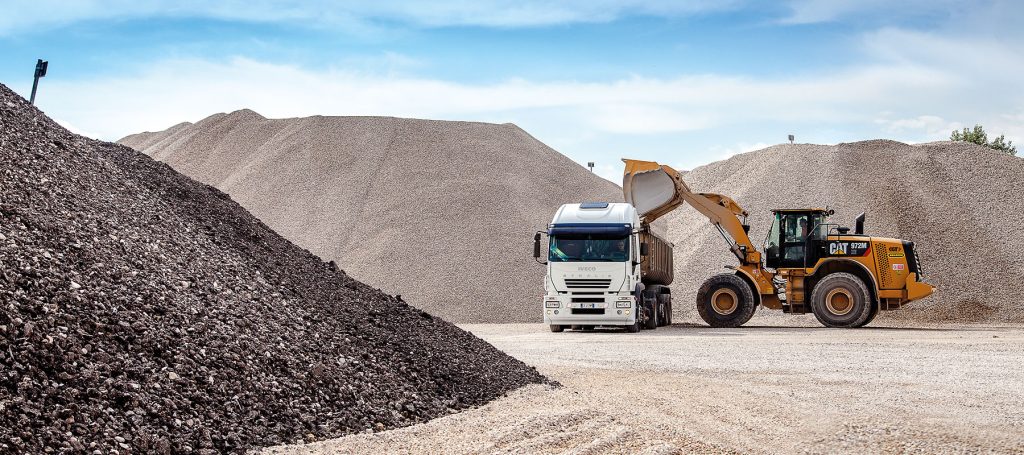SERVICE
Aggregate Analysis
Aggregates, which have an important place in concrete production, are the components that occupy around 60-75% of the concrete by volume. Aggregates are divided into two types according to their grain sizes: fine (such as sand, crushed sand, etc.) and coarse (such as gravel, crushed stone, etc.). The most important features sought in aggregates are as follows.
- They are hard, durable and void-free,
- They do not contain weak grains (such as seashell, wood, coal, etc.)
- They are resistant to pressure and abrasion,
- They do not contain dust, soil or substances that may damage concrete,
- They do not contain flat and long grains,
- They do not react harmfully with cement,
It is necessary. Our laboratory reports the suitability of aggregates in line with these requirements as a result of precise measurements and analyses. We continue our services with 25 years of experience in the sector in analyzes carried out by our impartial, independent and competent personnel. While handling this process, we report the chemical and/or physical properties using both instrumental and wet methods with current standards and supporting technological equipment. We follow and implement developments regarding energy materials with National and International Methods (TSE, ISO, ASTM, etc.). You can find our descriptions of our main activities below.
CONCRETE AGGREGATES (TS 706 EN 12620)
- TS EN 933-1 Grain Size Distribution
- TS EN 933-3 Grain Shape Determination-Flatness Index
- TS EN 933-4 Determination of Grain Shape-Shape Index
- TS EN 933-7 Percentage of Shells in Coarse Aggregates – Determination of Shell Content
- TS EN 933-8 Determination of Fine Aggregates – Determination of Sand Equivalent
- TS EN 933-9 Determination of Fine Aggregates – Methylene Blue Test
- TS EN 1097-1 Determination of Abrasion Resistance (Micro Deval)
- TS EN 1097-2 Determination of Fragmentation Resistance
- TS EN 1097-3 Determination of Loose Bulk Density and Void Volume
- TS EN 1097-6 Determination of Grain Density and Water Absorption Rate
- TS EN 1097-8 Determination of Stone Polishing Value
- TS EN 1097-9 Determination of Resistance to Wear Resistance from Studded Tires – Nordic Test
- TS EN 1367-1 Determination of Resistance to Freezing and Thawing
- TS EN 1367-2 Magnesium Sulfate Test
- TS EN 1367-4 Determination of Drying Shrinkage
- TS EN 1744-1 Chlorides
- TS EN 1744-1 Total Sulfur
- TS EN 1744-1 Acid Soluble Sulfate
- TS EN 1744-1 Light Organic Pollutants
- TS EN 1744-1 Fulvo Acid
- TS EN 1744-1 Determination of Humus Presence
- TS 13516 Determination of Alkali Reactivity (Determination of Mortar Rod)

ASPHALT AGGREGATES (TS EN 13043)
- TS EN 933-1 Grain Size Distribution
- TS EN 933-3 Grain Shape Determination-Flatness Index
- TS EN 933-4 Determination of Grain Shape-Shape Index
- TS EN 933-5 Determination of the Percentage of Crushed and Broken Surfaces in Coarse Aggregates
- TS EN 933-6 Evaluation of Surface Properties Flow Coefficient of Aggregates
- TS EN 933-9 Determination of Fine Aggregates – Methylene Blue Test
- TS EN 1097-1 Determination of Abrasion Resistance (Micro Deval)
- TS EN 1097-2 Determination of Fragmentation Resistance
- TS EN 1097-3 Determination of Loose Bulk Density and Void Volume
- TS EN 1097-5 Determination of Water Content
- TS EN 1097-6 Determination of Grain Density and Water Absorption Rate
- TS EN 1367-1 Determination of Resistance to Freezing and Thawing
- TS EN 1367-2 Magnesium Sulfate Test
- TS EN 1744-1 Chlorides
- TS EN 1744-1 Total Sulfur
- TS EN 1744-1 Acid Soluble Sulfate
- TS EN 1744-1 Light Organic Pollutants
- TS EN 1744-1 Fulvo Acid
- TS EN 1744-1 Determination of Humus Presence






